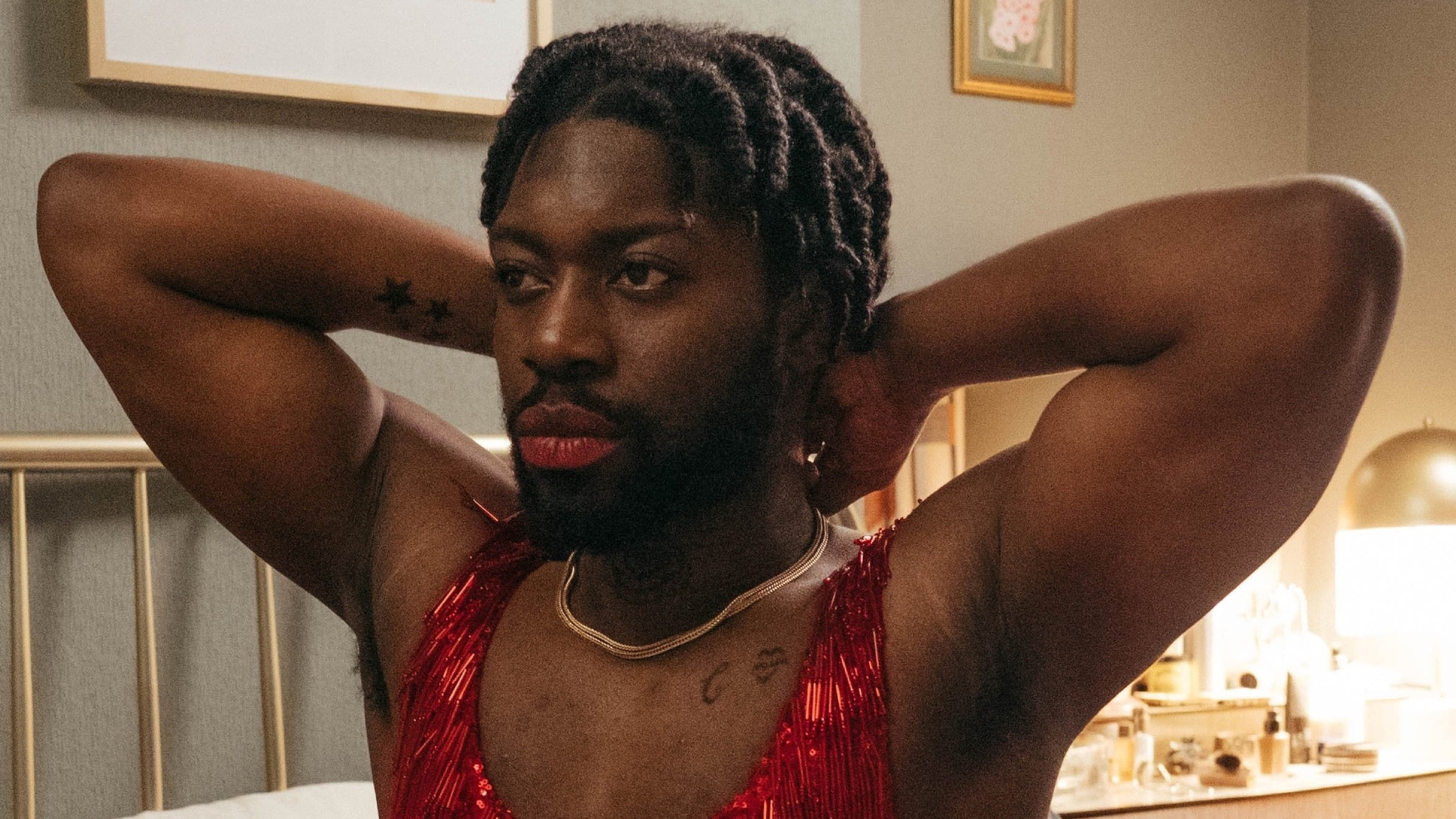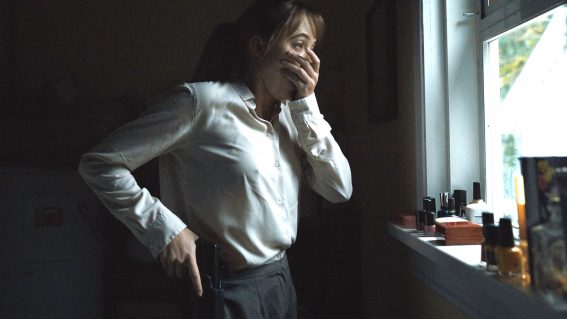Promising feature debut Pretty Red Dress does the memory of Tina Turner proud

A dazzling red dress bought for his partner prompts curiosity and personal questions for the man who purchased it in drama Pretty Red Dress. While imperfect, this is a promising feature debut, writes Lillian Crawford.
Pretty Red Dress
Only a few weeks before Pretty Red Dress is released, it is announced that pop sensation Tina Turner has died. She’s a singer whose legacy will last forever, constantly regenerated and held at the peak of her stardom through tribute shows like Tina – The Tina Turner Musical. It’s how she is remembered by Candice, played by Alexandra Burke, who has a mural to Turner above her mantelpiece. The image serves as inspiration to persist with her singing career as she works long hours at a supermarket checkout—and now her agent calls with the opportunity of a lifetime, to play Turner in a West End show.
Burke rose to her own fame after winning The X Factor in 2008, the sort of rags-to-riches story garnered by reality TV. It’s an arc that Candice craves, desperate to perform in front of audiences of millions. It’s a tender and honest performance that shows great promise for Burke as a film actress, moving between scenes of domestic drama and Turner’s showstoppers. At the film’s apex, she delivers a rousing rendition of Proud Mary in a dream-like sequence that transcends the reality she longs to escape from.
Supporting Candice is her partner Travis, played by Natey Jones, who has just finished serving time in prison. To show his support for Candice’s chance at a big break, Travis buys her a dazzling red dress which she wears to her auditions. But we soon learn that it is Travis himself who is drawn to this dress for reasons he never quite manages to articulate, at first shyly trying it on when Candice is at work before revealing his penchant for women’s clothing and make-up as his boldness increases.
Director Dionne Edwards navigates these dual storylines rather shakily, never quite sure if she is making a film about Candice or Travis. The result is a peculiar dissonance between the couple, who never manage to fully communicate with each other about their respective desires. Pretty Red Dress does explore interesting aspects of their sexual dynamic, rather radically showing a woman dominating her male partner. They attempt to incorporate Travis’s crossdressing into their sex life, albeit with both partners questioning whether this form of bedroom emasculation is right or wrong.
Edwards never settles on an answer to that question. Not that the film has to, and it is liberating to see a film which never tries to fix any labels on its characters. But not knowing where to stick the landing sees the film stretch out unnecessarily to 110 minutes as it explores the implications for Travis’s sexuality and gender identity. These ideas are further confused by Jones never quite seeming comfortable himself in Candice’s dress, making it difficult to see any desire within him to wear it, all the more pronounced by Burke’s self-assurance.
The real strength of Pretty Red Dress comes from Temilola Olatunbosun as the couple’s daughter Kenisha. Her own negotiations with sexuality and identity tie the film together, showing how her parents’ tribulations impact her behavior at school. The film’s messiness authentically portrays the complications of family life, and the often fraught tensions which exist between generations especially when we simply cannot conform.
For all its flaws, Pretty Red Dress is a promising feature debut from Edwards, who with a clearer sense of vision can clearly weave together complex themes without losing their nuance. It’s also a delight to see Burke in another guise, undoubtedly doing the memory of Tina Turner proud.



















